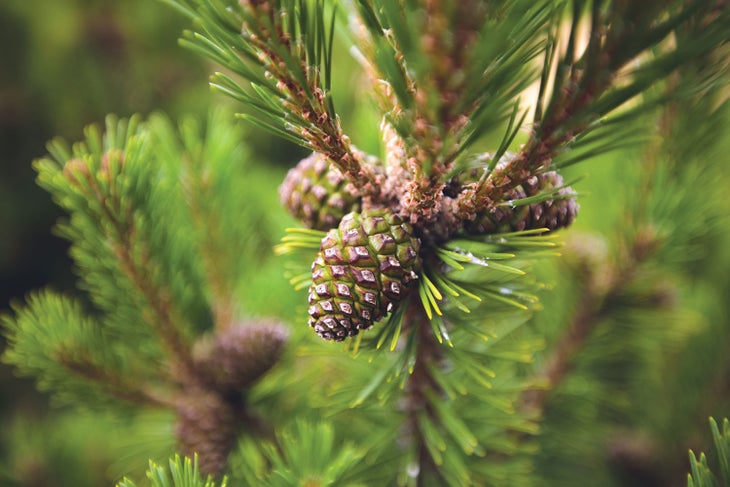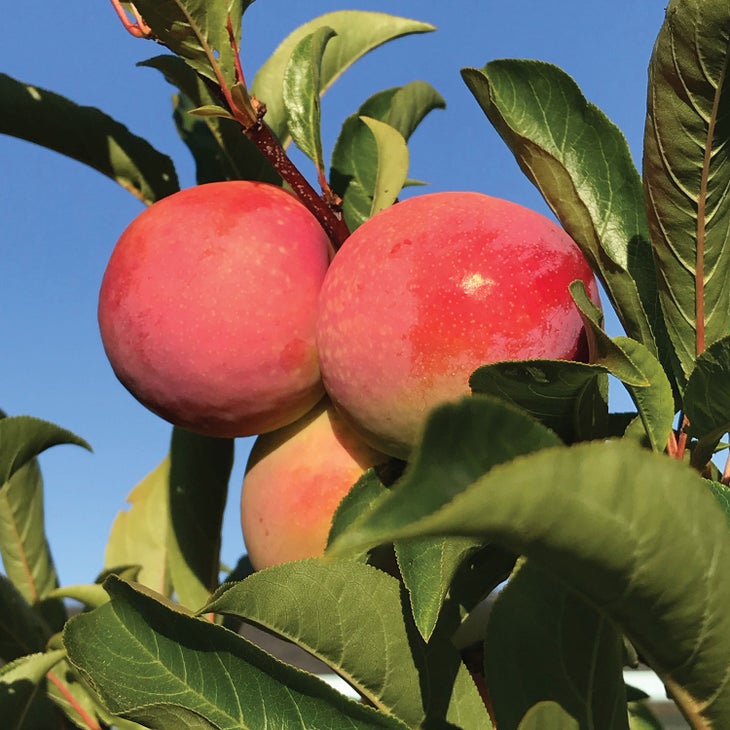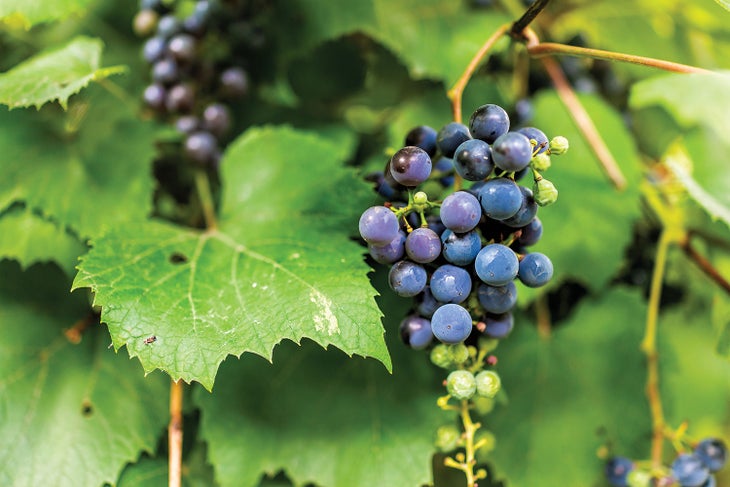Heading out the door? Read this article on the new Outside+ app available now on iOS devices for members! Download the app.
Pine (Pinus)

Where Various species of this conifer can be found growing in well-drained soil throughout North America.
Harvest Year-round. The needles, bark, seeds, and cones of all pine species are edible. A tangy tea can be made by infusing the needles in hot water (they’re too fibrous to eat more than a few raw). The male cones (smaller than females and best when immature), seeds produced by mature female cones, and white inner bark can all be eaten as a trailside nibble.
American Plum (Prunus americana)

Where This scraggly tree can be found at lower elevations (below 7,000 feet) across the continent in canyons, hillsides, and along roadsides. Look for them near water sources such as rivers and creeks.
Harvest Fruits in late August. The tart and sweet plum can be eaten straight off the branch as a snack, cooked in campfire dessert crumbles, or made into fruit leathers, sweet and sour sauces, or jellies.
Wild Grape (Vitis)

Where Look near the banks of streams and in moist soil.
Harvest The fruits usually ripen in late summer to early fall, but the sweet, tart bounty can sometimes be found hanging from 10- to 60-foot vines into the winter months (if birds don’t get them first). Bake into a backcountry pie or simply enjoy a mid-hike treat. In the spring, add the new growth of the slightly coiled tendrils to salads for a satisfyingly fresh and sour crunch.
Cattail (Typha)

Where Look for them in wetlands, swamps, and riverbanks.
Harvest Eat different parts year-round. The underground stems (rhizomes), shoots, immature flower spikes, and pollen of the cattail are edible. The starchy-sweet rhizomes can be gathered in the fall through early spring, the green bean-like shoots are best in spring, and the flower spikes and pollen can be harvested in early summer. Above-ground parts can be used in soups, stir fries, or steamed.